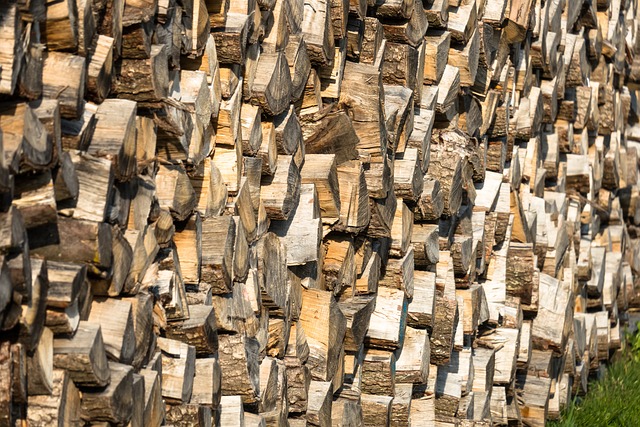When it comes to enjoying a cozy evening by the fireplace or lighting up your wood-burning stove, the quality of your firewood makes a significant difference. Kiln-dried firewood has gained popularity in recent years for its superior burning characteristics, cleanliness, and convenience. In this comprehensive guide, we will explore everything you need to know about kiln-dried firewood, including its benefits, types, where to find it, and how to store it properly.
What is Kiln-Dried Firewood?
Kiln-dried firewood is a type of firewood that has undergone a drying process in a kiln, which is a type of oven or furnace designed to remove moisture from the wood. This process is carefully controlled to achieve a specific moisture content, typically between 6% and 20%, depending on the wood type and the desired use.
Benefits of Kiln-Dried Firewood
Kiln-dried firewood offers numerous advantages over traditional seasoned or air-dried firewood:
A. Low Moisture Content
One of the most significant benefits of kiln-dried firewood is its low moisture content. The drying process removes excess moisture, resulting in wood with moisture levels well below the 20% threshold recommended for efficient burning. Low moisture content means the wood ignites easily, burns cleaner, and produces more heat.
B. Clean and Pest-Free
Kiln-dried firewood is free from insects, mold, and fungi. The high temperatures used in the kiln eliminate any potential pests, ensuring that the wood is clean and safe to use indoors.
C. Consistent Quality
The controlled drying process in a kiln ensures uniform moisture content throughout the wood, leading to consistent and predictable burning characteristics. This makes it easier to manage your fire and maintain a steady heat output.
D. Reduced Creosote Buildup
Creosote is a byproduct of burning wood that can accumulate in chimneys and stovepipes, posing a fire hazard. Kiln-dried firewood produces significantly less creosote compared to green or seasoned wood, reducing the risk of chimney fires.
E. Environmentally Friendly
Kiln-dried firewood is an environmentally responsible choice. By burning wood with low moisture content, you contribute to reduced emissions and a smaller carbon footprint.
Types of Kiln-Dried Firewood
There are various types of wood that can be kiln-dried for use as firewood. Each type of wood offers its unique burning characteristics and aroma. Here are some common types of kiln-dried firewood:
A. Oak Kiln-Dried Firewood
Oak is a popular choice for firewood due to its slow-burning nature and high heat output. It’s ideal for heating larger spaces and provides a pleasant, smoky aroma.
B. Ash Kiln-Dried Firewood
Ash is known for its easy ignition and even burn. It produces minimal ash and is favored for its clean-burning qualities.
C. Birch Kiln-Dried Firewood
Birch wood is prized for its attractive flame patterns and quick ignition. It’s a good choice for kindling and for adding a touch of fragrance to your fire.
D. Beech Kiln-Dried Firewood
Beech wood offers a long and steady burn with a high heat output. It’s a favorite for those seeking a reliable and efficient source of heat.
E. Silver Birch Kiln-Dried Firewood
Silver birch is a hardwood that combines quick ignition with a pleasant aroma, making it a popular choice for both heating and ambiance.
Where to Find Kiln-Dried Firewood Near You
Finding kiln-dried firewood near you is essential to ensure you have a convenient and reliable source for your heating or recreational needs. Here are some places to look for kiln-dried firewood:
A. Local Firewood Suppliers
Start your search by looking for local firewood suppliers or dealers. Many of them offer kiln-dried firewood as part of their product range. You can search online or inquire with neighbors and friends for recommendations.
B. Home Improvement Stores
Large home improvement stores and garden centers often carry kiln-dried firewood, especially during the colder months. Check their inventory or call ahead to confirm availability.
C. Online Retailers
Online retailers and marketplaces like Amazon and eBay may offer kiln-dried firewood, and some sellers specialize in delivering high-quality firewood right to your doorstep.
D. Firewood Delivery Services
Several companies specialize in delivering firewood to your location, including kiln-dried options. These services often provide a convenient way to ensure a steady supply of firewood throughout the year.
E. Local Farmers and Foresters
In rural areas, you can contact local farmers or foresters who may sell kiln-dried firewood directly. They can provide insights into the wood’s origin and sustainability.
How to Store Kiln-Dried Firewood
Proper storage is crucial to maintain the quality of your kiln-dried firewood and ensure it burns effectively. Here are some tips for storing your firewood:
A. Choose a Dry Location
Store your kiln-dried firewood in a dry, well-ventilated area. A woodshed or covered firewood rack is ideal for protecting the wood from rain and snow.
B. Elevate the Wood
Stack the firewood off the ground using pallets or a raised platform to prevent moisture absorption from the soil. This also helps with airflow to keep the wood dry.
C. Stack Wood Neatly
Stack the firewood in a stable and orderly manner, allowing for good airflow between the logs. This helps the wood to continue drying and reduces the risk of mold growth.
D. Cover the Top
Use a tarp or firewood cover to protect the top of the stack from rain and snow, while still allowing air to circulate.
E. Rotate the Stack
If possible, rotate the firewood stack every few months to ensure even drying and prevent any wood at the bottom from becoming too moist.
F. Keep Wood Away from the House
While it’s convenient to have firewood close to your home, avoid stacking it against the house. This can create a hiding place for pests and can also trap moisture against your home’s exterior.
Kiln Drying Process
The kiln drying process involves carefully controlling temperature, humidity, and airflow to remove moisture from the wood. Here’s an overview of the steps involved:
A. Pre-Drying Preparation
- Sorting: Logs are sorted based on species, size, and moisture content.
- Stacking: Logs are stacked in the kiln in a way that allows for uniform drying.
B. Initial Drying
- Heating: The kiln is heated gradually to begin the drying process. This phase removes surface moisture.
C. Intermediate Drying
- Gradual Temperature Increase: Temperature and humidity are adjusted to continue drying the wood while minimizing stress and defects.
D. Final Drying
- Maximum Temperature: The kiln is heated to a higher temperature to achieve the desired moisture content.
E. Cooling and Stabilizing
- Cooling: The wood is gradually cooled to prevent stress and checking.
- Stabilizing: The wood is kept in a climate-controlled environment to stabilize its moisture content.
F. Quality Control
- Quality Testing: Samples are periodically tested to ensure the desired moisture content is achieved.
G. Packaging and Distribution
- Packaging: The kiln-dried firewood is packaged and prepared for distribution.
Kiln-Dried Firewood vs. Seasoned Firewood
Kiln-dried firewood and seasoned firewood are both popular choices for heating and recreational use, but they have distinct differences:
A. Moisture Content
Kiln-dried firewood has a significantly lower moisture content (usually below 20%) compared to seasoned firewood, which can have a moisture content ranging from 20% to 50% or more.
B. Drying Time
Kiln-dried firewood is dried in a controlled environment, typically taking a few days to a few weeks. Seasoned firewood, on the other hand, is air-dried outdoors and can take several months or even years to reach suitable moisture levels.
C. Cleanliness
Kiln-dried firewood is cleaner and less likely to contain pests, mold, or fungi due to the controlled drying process. Seasoned firewood may have a higher risk of these issues.
D. Consistency
Kiln-dried firewood offers consistent quality and burning characteristics, while seasoned firewood can vary in moisture content and quality.
E. Price
Kiln-dried firewood is generally more expensive than seasoned firewood due to the cost of the drying process and the higher quality it offers.
F. Convenience
Kiln-dried firewood is convenient to use immediately, while seasoned firewood may require additional drying time before it’s suitable for burning.
How to Choose the Best Kiln-Dried Firewood
Selecting the best kiln-dried firewood for your needs involves considering several factors:
A. Wood Type
Choose a wood type that aligns with your preferences, whether it’s for heat output, aroma, or ambiance. Oak, ash, birch, beech, and silver birch are popular choices, each offering unique characteristics.
B. Moisture Content
Check the moisture content of the firewood before purchase. Kiln-dried firewood should have a moisture content between 6% and 20%. You can use a moisture meter to verify this information.
C. Supplier Reputation
Research the reputation of the supplier or seller. Read reviews, ask for recommendations, and ensure they have a history of providing high-quality kiln-dried firewood.
D. Packaging and Storage
Inspect the packaging and storage conditions to ensure the firewood has been properly stored and protected from moisture.
E. Quantity and Delivery
Consider the quantity you need and whether the supplier offers convenient delivery options. Buying in bulk may be more cost-effective if you have ample storage space.
Buying Kiln-Dried Firewood in Bulk
If you plan to use kiln-dried firewood regularly, buying in bulk can be a cost-effective option. Here are some tips for purchasing kiln-dried firewood in larger quantities:
A. Determine Your Needs
Calculate how much firewood you’ll need for an entire heating season or year. This will help you determine the quantity to purchase.
B. Find a Reputable Supplier
Research and choose a reputable supplier known for providing high-quality kiln-dried firewood in bulk.
C. Inquire About Discounts
Many suppliers offer discounts when you buy firewood in larger quantities. Inquire about bulk pricing to get the best deal.
D. Prepare Adequate Storage
Ensure you have enough storage space to accommodate the bulk purchase. Follow proper storage guidelines to maintain the wood’s quality.
E. Schedule Delivery
Coordinate delivery with the supplier to ensure you receive the firewood when you need it. Plan ahead to avoid running out during the heating season.
Conclusion
Kiln-dried firewood is a superior choice for heating, cooking, and creating a cozy atmosphere in your home. Its low moisture content, cleanliness, and consistent quality make it a reliable and efficient option. By following the guidelines in this comprehensive guide, you can find the best kiln-dried firewood near you, store it properly, and enjoy the warmth and comfort it provides throughout the year. Whether you prefer the slow burn of oak, the quick ignition of birch, or the clean-burning qualities of ash, kiln-dried firewood has something to offer every fire enthusiast. Make the switch to kiln-dried firewood today and elevate your fire experience to a new level of convenience and enjoyment.





